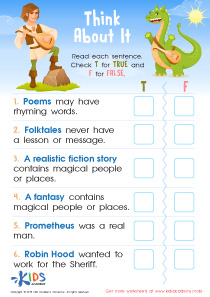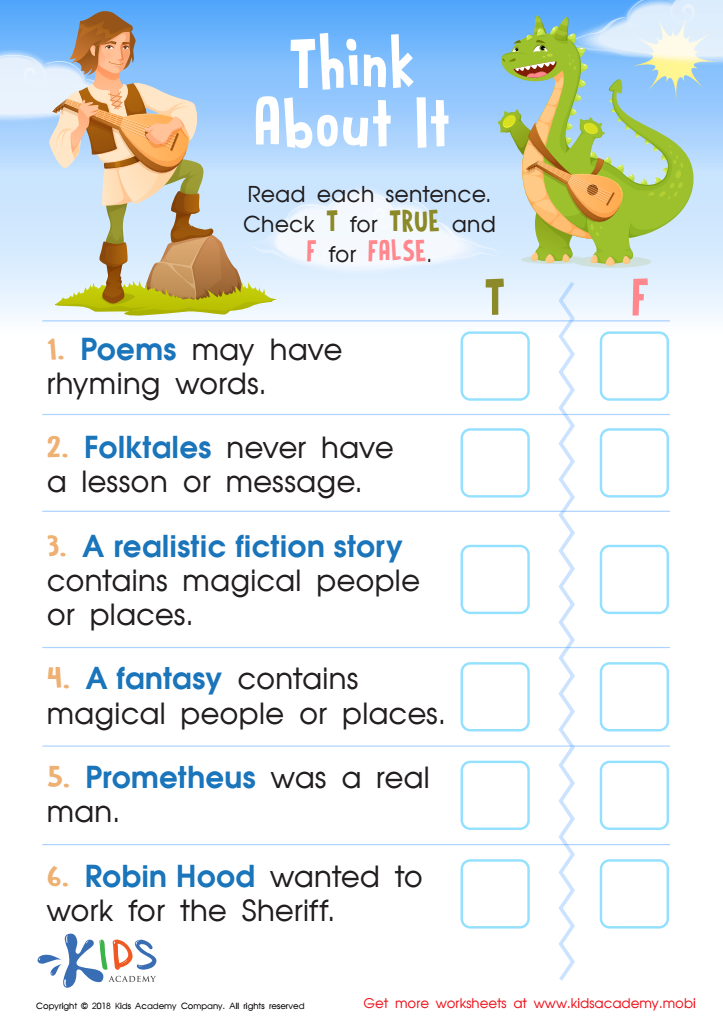Identifying Different Genres - Lesson for Grade 3, Chapter - Other Genres
In the lesson "Identifying Different Genres," Grade 3 students delve into the rich tapestry of literary genres, which is a crucial chapter in the Comprehension unit. This lesson highlights the importance of distinguishing between various genres such as fiction, non-fiction, fantasy, mystery, and more. Understanding these distinctions not only enriches students’ reading experience but also enhances their analytical skills, enabling them to approach texts with a more critical mindset.
The lesson incorporates a thoughtful "Think About It: Assessment Worksheet," designed to engage students in active learning. Through this activity, they will not only learn to identify different genres but also understand the unique elements that define each genre. This knowledge is pivotal because it helps students navigate the vast world of literature more effectively, choosing texts that align with their interests or educational needs.
Moreover, recognizing genres aids in developing expectations about the content and structure of a book or story, thus improving comprehension skills. It also encourages a deeper appreciation of the diversity in literature, fostering a lifelong love for reading. By mastering this skill early on, students are better equipped to explore and enjoy the wide array of written works available to them.

-
Activity 1 / Think About It: Assessment Worksheet
Reading is a fun part of learning. And, to get your students to be much better and skilled readers, you must give them exercises they can constantly practice with. This simple and colorful worksheet needs your child to identify if the statements are true or false. Read each sentence aloud to your little kindergartners. Then, ask them to read the sentences aloud by themselves. Can they determine if the sentences are true or false? Help them check T for True, and F for False.


